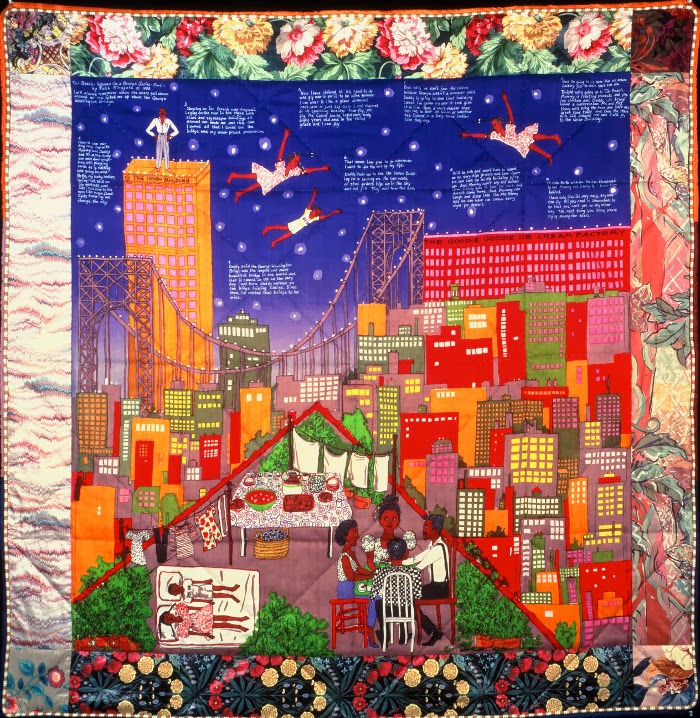Besides building vocabulary through the subjects of the artwork we studied, it was exciting to introduce sentence patterns such as, "I wonder..." and "I wish..."
One artist I introduced is Faith Ringgold. Though some aspects of American culture are pervasive in Taiwan, African Americans and African American culture are rarely represented. Yet at the same time, when I looked into Ringgold's art, I saw the dense urban world these children lived in.
I found a narrated copy of Tar Beach on YouTube to make up for not having a copy of Ringgold's beautiful book in Taiwan.
So the students flew over their own city.
They also practiced the proportion drawing I had done back on Maui.
The students wrote about what they imagined, what they wondered, and where they flew.
As always, we showed proof of learning.

























































